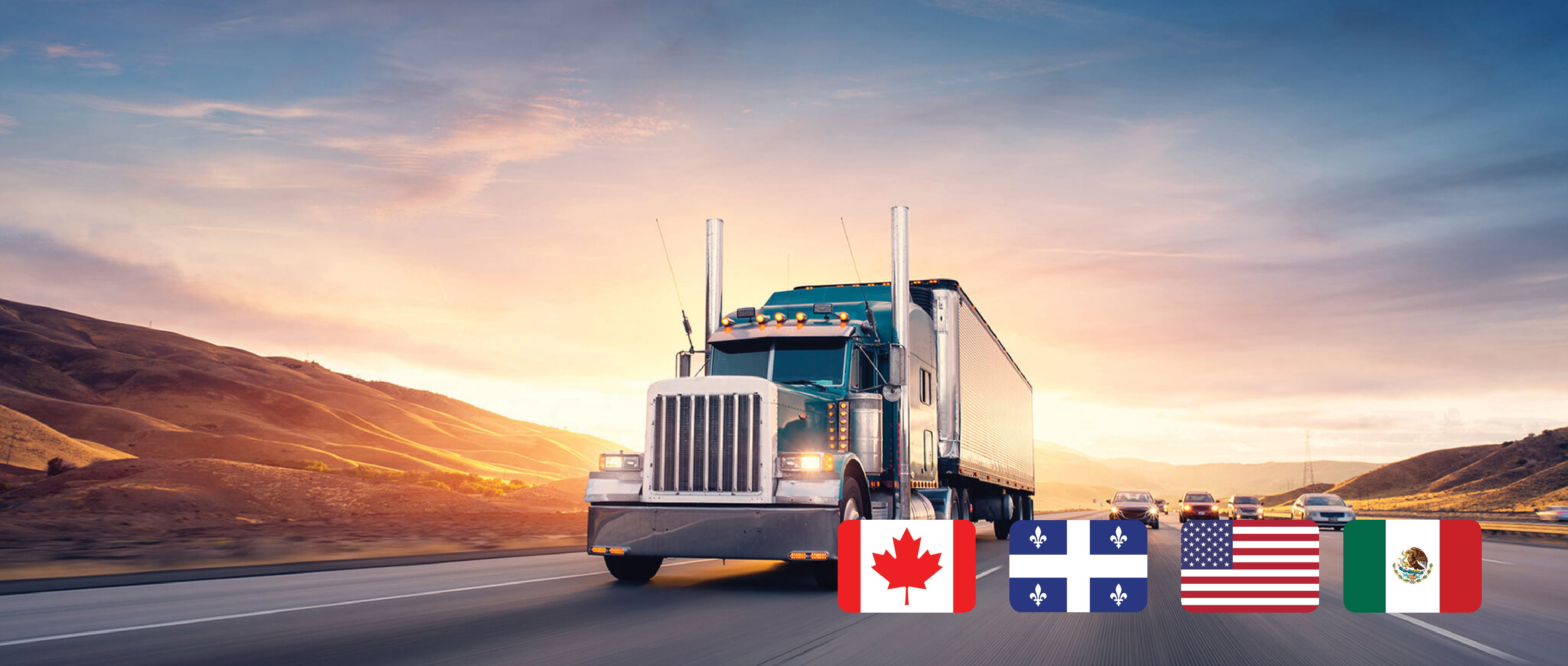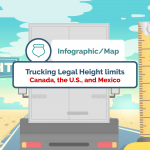What is the best, cost-effective service mode for your ground freight transportation needs?
Ground Freight offers a wide range of transport services, each with its own cost, capacity, speed, availability and reliability characteristics. This guide will help you select the best, cost-effective service mode for your specific freight transportation needs.
We will cover the characteristics, advantages, and disadvantages of the 3 ground transportation modes for commercial goods:
- Full Truckload (FTL)
- Less Than Truckload (LTL).
- Parcel
We will answer questions such as: What is the difference between Full Truckload and Less Than Truckload Services? And then, what are the main differences between freight and Parcel? What are the specifications of a shipment being transported through an FTL or LTL service?
At the end of this post, you will be able to determine what freight transportation mode is more convenient for you in terms of service and cost-efficiency.
1-WHAT IS FULL-TRUCKLOAD TRANSPORT SERVICE?
Full Truckload, also known as FTL, is the ground transportation service in which a complete truck is dedicated to a single load or, in other words, to a single customer.
WHEN TO SELECT A FULL TRUCKLOAD SERVICE?
The FTL transport service is suitable for you if:
- You need to transport many pallets.
If you are moving from 26 non-stackable pallets or up to 52 stackable pallets of standard sizes, Full TruckLoads is the fastest and most cost-effective service for you. - You need to transport large goods.
If your load is occupying more than 12 linear feet because of its size or shape, the Full Truck Load transportation mode is best for you. Examples of this type of load are manufacturing equipment or machinery. - You need to transport a fragile load.
If your load needs to be handle with care and has the risk of getting damaged if transported together with other loads, it is a good idea to consider a Full Truckload service. If your shipment is small, the FTL option would be more expensive than the LTL option, however, having a dedicated unit for your load will greatly decrease the risk of damage. - Your shipment requires temperature-controlled shipping.
In this case, there is no other option, if your load requires regulated temperature, Full Truckload is the mode of transportation you need. Less Than Truckload services are not suitable for temperature-controlled shipments.
FULL TRUCKLOAD (FTL) SPECS:
- Up to 26 non-stackable pallets or up to 52 stackable pallets of standard sizes. Remember the pallet’s standard measures: 48 “x 40” x 48 “.
- The total weight of the load- up to 44,000 pounds or 21.7 tons.
2- WHAT IS LESS THAN TRUCKLOAD FREIGHT TRANSPORT OR LTL?
Less Than Truckload shipping or LTL is the transportation of freight that combines shipments from multiple customers in a single truck.
As every customer’s shipment does not require a full 48′ or 53′ trailer, the portion of the truck unused is filled up with another customer’s shipment. This way, each customer pays according to the type (class), amount, weight, size and density of shipment and the length of travel. That is why LTL transport is the most affordable option for small loads.
WHEN TO SELECT A LESS THAN TRUCKLOAD SERVICE?
The LTL transport service is suitable for you if:
- Your load is too big for a parcel service but too small for a Full Truckload Service
If you are moving from 1 to 6 non-stackable pallets that weight less than 5000lbs each, Less Than Truckload is the most cost-effective option for you.
How does it work?
LTL freight takes up to 12 linear feet of the trailer. 6 standard pallets (48″x 40″ x 48″) arranged side-by-side would take up exactly 12’ of linear space.
LESS THAN TRUCKLOAD (LTL) SPECS:
- 12 linear feet
- The total weight of the load should be 10,000 pounds or 4.5 tons
- Each pallet should weight less than 5000 pounds.
3- WHAT IS PARCEL?
A parcel is a package shipped through postal service or by express package delivery service to the recipient.
WHEN TO SELECT A PARCEL SERVICE? WHAT IS THE DIFFERENCE BETWEEN PARCEL AND FREIGHT?
- If your package weighs less than 150lb or 70kg and measures less than 108 inches or 270 cm length, you can ship it as a parcel. The price will be determined based on the package weight and size.If your shipment exceeds the size or weight of a parcel, then you will need to ship it as freight.
PARCEL SPECS:
Weight and size specifications for parcels are:
- Packages cannot exceed 150 lb or 70kg.
- Packages can be up to 165 inches in length and girth combined.
- Packages can only be up to 108 inches or 270cm in length.
Anything that exceeds the specifications above becomes a freight shipment, either an LTL or an FTL. Both services can be provided by Mexicom Logistics.
IMPORTANT NOTE:
WHEN SHIPPING MORE, MEANS PAYING LESS: LTL VS PARCEL
In some cases, there is a thin line between LTL and parcel services.
Both services LTL and parcel offer rates based on the route, dimensions, weight, and how easy or difficult it is to handle a specific product, among other factors.
However, sometimes your best bet would be to do LTL shipments instead of parcels. If you are able to accumulate more freight and you are able to ship bigger, you will be able to save substantially.
In this case, for 24 CAD more, you are able to transport: 9 times more in volume and 33 times more in weight by using an LTL service instead of a parcel service.
Shipping from Canada and the US to Mexico?
Not sure what freight transportation mode is more convenient for you?
Contact Mexicom Logistics
info@mexicomlogistics.com












